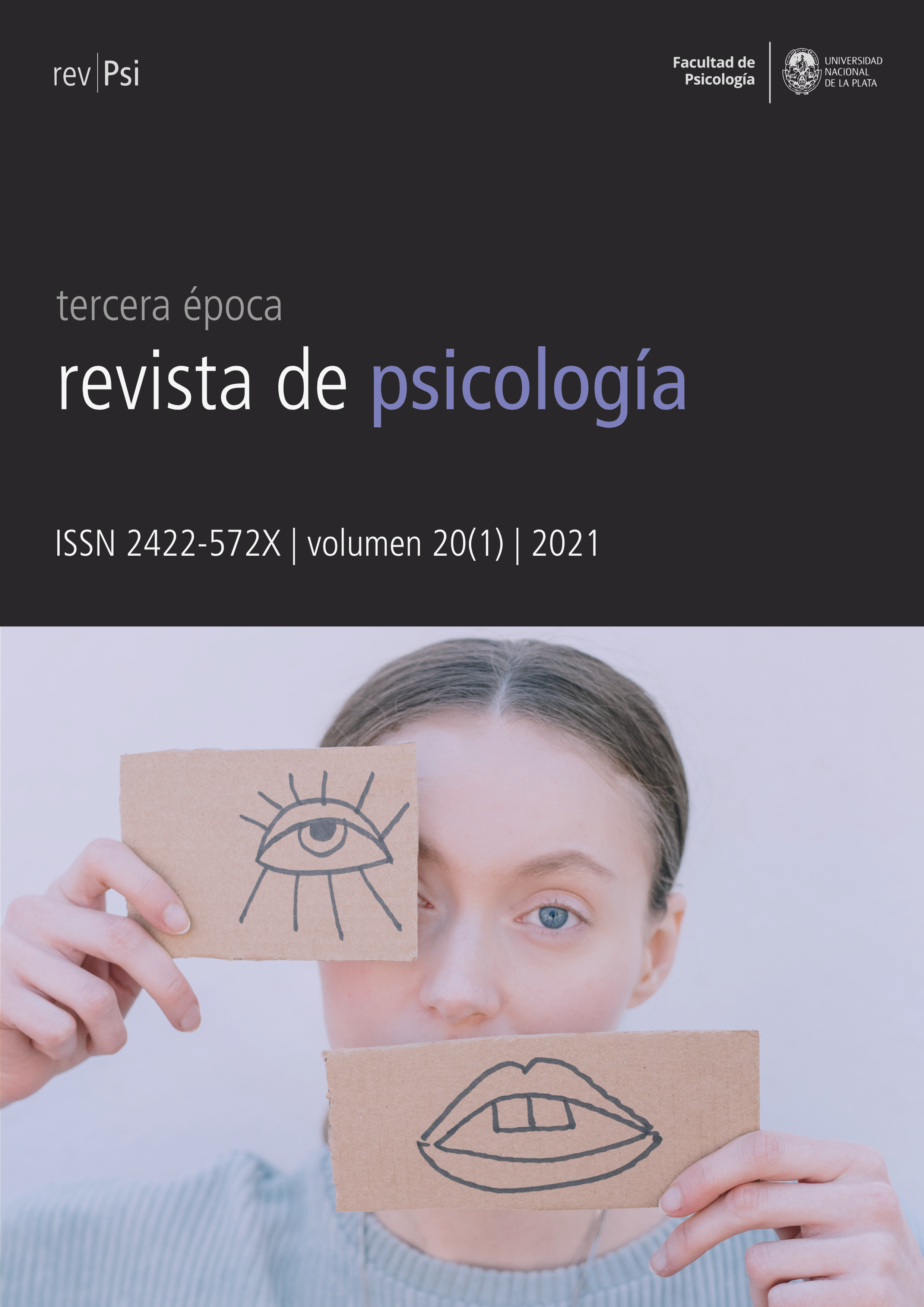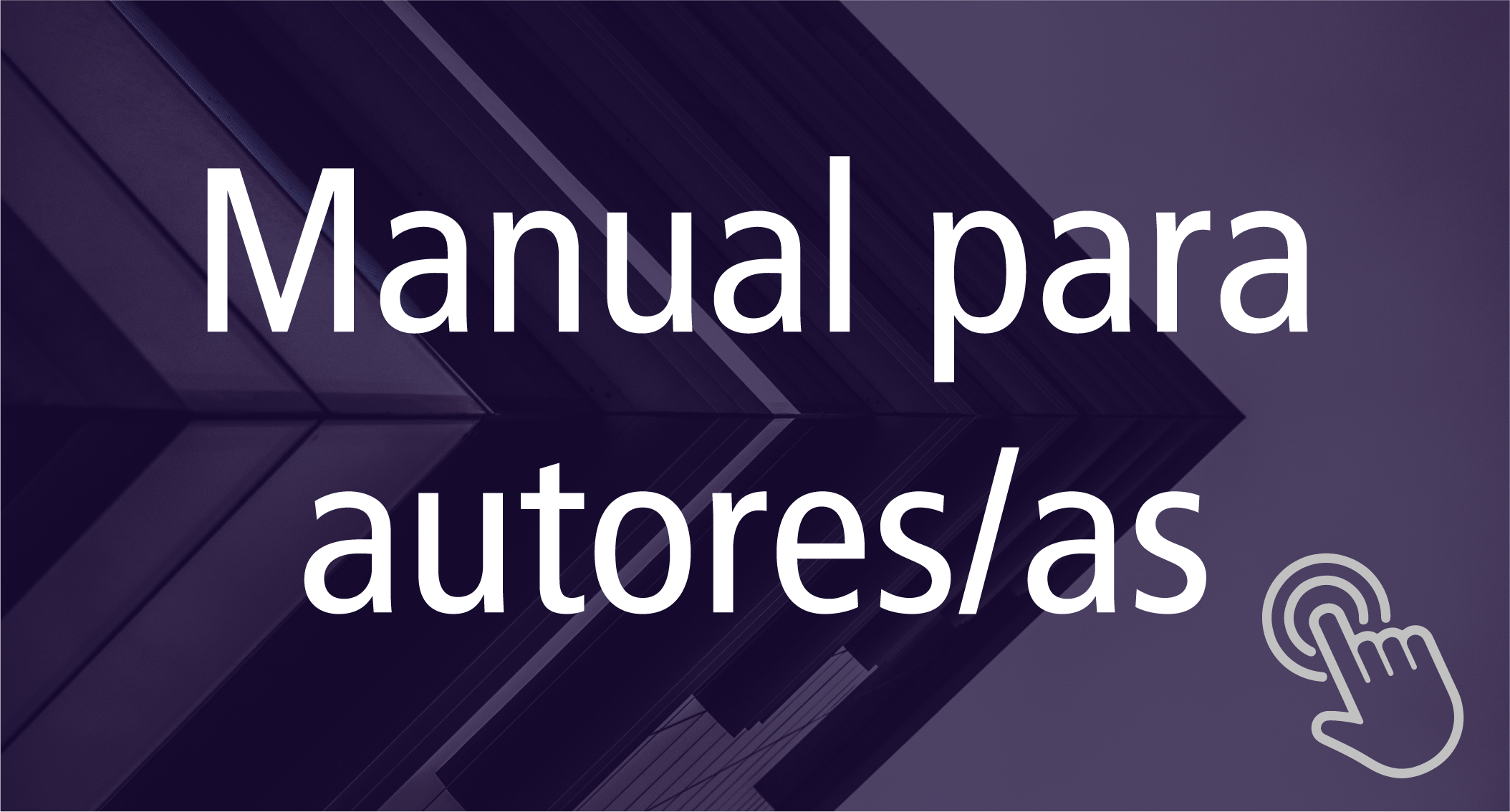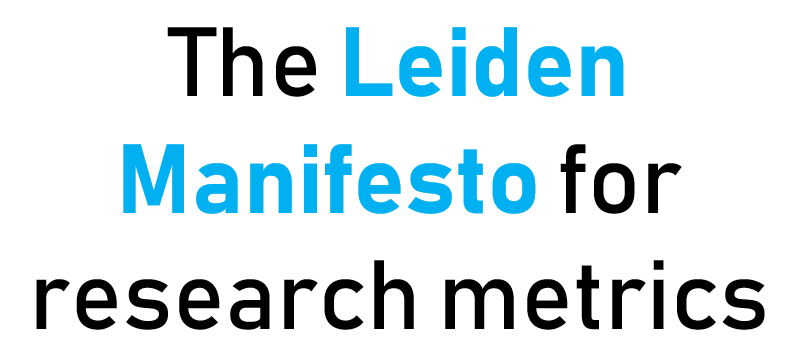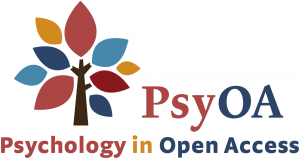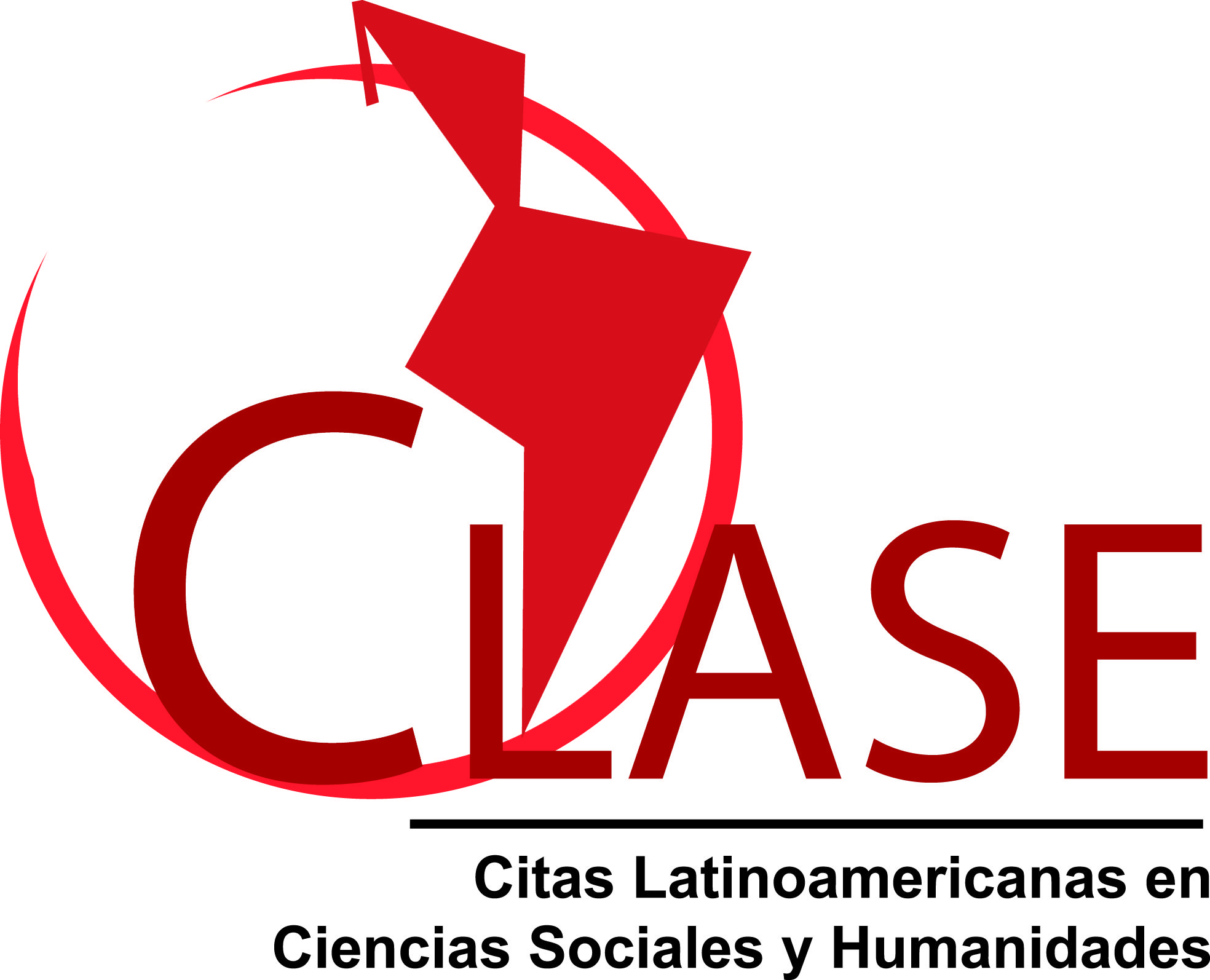Rir para lembrar: melhoria da memória relacionada ao humor
DOI:
https://doi.org/10.24215/2422572Xe125Palavras-chave:
riso, humor, cérebro humano, memória, emoções positivas, redes cerebraisResumo
As emoções positivas são valorizadas e procuradas em nossa vida diária, mas seu papel funcional na cognição ainda é pouco compreendido. Apesar de certas semelhanças, as emoções positivas e negativas dependem de vias neuronais distintas e podem, portanto, influenciar de forma diferente as funções cognitivas, como a memória. Neste artigo de revisão, apresento primeiro os efeitos cognitivos e as bases neurais das emoções positivas, focalizando as especificidades das emoções induzidas por humor. Posteriormente, descrevo a influência benéfica do humor na memória e discuto os possíveis mecanismos neurais que podem melhorar a memória relacionada ao humor no cérebro humano.
Referências
Anderson, A. K., Christoff, K., Stappen, I., Panitz, D., Ghahremani, D. G., Glover, G., Gabrieli, J. D. E. y Sobel, N. (2003). Dissociated neural representations of intensity and valence in human olfaction. Nature Neuroscience, 6(2), 196-202. https://doi.org/10.1038/nn1001
Arroyo, S., Lesser, R. P., Gordon, B., Uematsu, S., Hart, J., Schwerdt, P., Andreasson, K. y Fisher, R. S. (1993). Mirth, laughter and gelastic seizures. Brain, 116(4), 757-780.
Bains, G. S., Berk, L. S., Daher, N., Lohman, E., Schwab, E., Petrofsky, J. y Deshpande, P. (2014). The effect of humor on short-term memory in older adults : A new component for whole-person wellness. Advances in Mind-Body Medicine, 28(2), 16-24.
Bains, G. S., Berk, L. S., Lohman, E., Daher, N., Petrofsky, J., Schwab, E. y Deshpande, P. (2015). Humors effect on short-term memory in healthy and diabetic older adults. Alternative Therapies in Health and Medicine, 21(3), 16-25.
Barrett, L. F. y Russell, J. A. (1999). The structure of current affect : Controversies and emerging consensus. Current Directions in Psychological Science, 8(1), 10-14.
Bartolo, A., Benuzzi, F., Nocetti, L., Baraldi, P. y Nichelli, P. (2006). Humor comprehension and appreciation : An fMRI study. Journal of Cognitive Neuroscience, 18(11), 1789-1798. https://doi.org/10.1162/jocn.2006.18.11.1789
Bekinschtein, T. A., Davis, M. H., Rodd, J. M. y Owen, A. M. (2011). Why clowns taste funny : The relationship between humor and semantic ambiguity. Journal of Neuroscience, 31(26), 9665-9671. https://doi.org/10.1523/JNEUROSCI.5058-10.2011
Beyeler, A., Namburi, P., Glober, G. F., Simonnet, C., Calhoon, G. G., Conyers, G. F., Luck, R., Wildes, C. P. y Tye, K. M. (2016). Divergent routing of positive and negative information from the amygdala during memory retrieval. Neuron, 90(2), 348-361. https://doi.org/10.1016/j.neuron.2016.03.004
Bolkan, S., Griffin, D. J. y Goodboy, A. K. (2018). Humor in the classroom : The effects of integrated humor on student learning. Communication Education, 67(2), 144-164. https://doi.org/10.1080/03634523.2017.1413199
Bradley, M. M., Greenwald, M. K., Petry, M. C. y Lang, P. J. (1992). Remembering pictures : Pleasure and arousal in memory. Journal of Experimental Psychology. Learning, Memory, and Cognition, 18(2), 379-390.
Brissaud, E. (1895). Leçons sur les maladies nerveuses. En Vingt-quatrième leçon, Tics et spasms cloniques de la face (p. 446‑468).
Cahill, L. y McGaugh, J. L. (1995). A novel demonstration of enhanced memory associated with emotional arousal. Consciousness and Cognition, 4(4), 410-421. https://doi.org/10.1006/ccog.1995.1048
Carlson, K. (2011). The impact of humor on memory : Is the humor effect about humor? Psychology Faculty Publications, 21. https://scholar.valpo.edu/psych_fac_pub/21
Chambers, A. M. y Payne, J. D. (2014). Laugh yourself to sleep : Memory consolidation for humorous information. Experimental Brain Research, 232(5), 1415-1427. https://doi.org/10.1007/s00221-013-3779-7
Chan, Y.-C., Chou, T.-L., Chen, H.-C. y Liang, K.-C. (2012). Segregating the comprehension and elaboration processing of verbal jokes : An fMRI study. NeuroImage, 61(4), 899-906. https://doi.org/10.1016/j.neuroimage.2012.03.052
Chan, Y.-C., Chou, T.-L., Chen, H.-C., Yeh, Y.-C., Lavallee, J. P., Liang, K.-C. y Chang, K.-E. (2013). Towards a neural circuit model of verbal humor processing : An fMRI study of the neural substrates of incongruity detection and resolution. NeuroImage, 66, 169-176. https://doi.org/10.1016/j.neuroimage.2012.10.019
Christianson, S.-Å. y Fällman, L. (1990). The role of age on reactivity and memory for emotional pictures. Scandinavian Journal of Psychology, 31(4), 291-301. https://doi.org/10.1111/j.1467-9450.1990.tb00841.x
Depue, R. A. y Collins, P. F. (1999). Neurobiology of the structure of personality : Dopamine, facilitation of incentive motivation, and extraversion. Behavioral and Brain Sciences, 22(3), 491‑517; discussion 518-569. https://doi.org/10.1017/s0140525x99002046
Diener, E. y Larsen, R. (1993). The experience of emotional well-being. En M. Lewis y J.M. Haviland (Eds.), Handbook of emotions (pp. 405-415). Guilford.
Ekman, P. (1992). An argument for basic emotions. Cognition & Emotion, 6(3-4), 169-200.
Ford, T. E., Ford, B. L., Boxer, C. F. y Armstrong. (2012). Effect of humor on state anxiety and math performance. Humor, 25(1), 59-74. https://doi.org/10.1515/humor-2012-0004
Franklin, R. G. y Adams, R. B. (2011). The reward of a good joke : Neural correlates of viewing dynamic displays of stand-up comedy. Cognitive, Affective, & Behavioral Neuroscience, 11(4), 508-515. https://doi.org/10.3758/s13415-011-0049-7
Fredrickson, B. L., Mancuso, R. A., Branigan, C. y Tugade, M. M. (2000). The undoing effect of positive emotions. Motivation and Emotion, 24(4), 237-258. https://doi.org/10.1023/a:1010796329158
George, M. S., Ketter, T. A., Parekh, P. I., Horwitz, B., Herscovitch, P. y Post, R. M. (1995). Brain activity during transient sadness and happiness in healthy women. The American Journal of Psychiatry, 152(3), 341-351. https://doi.org/10.1176/ajp.152.3.341
Gervais, M. y Wilson, D. S. (2005). The evolution and functions of laughter and humor : A synthetic approach. The Quarterly Review of Biology, 80(4), 395-430. https://doi.org/10.1086/498281
Goel, V. y Dolan, R. J. (2001). The functional anatomy of humor : Segregating cognitive and affective components. Nature Neuroscience, 4(3), 237-238. https://doi.org/10.1038/85076
Goodboy, A. K., Booth-Butterfield, M., Bolkan, S. y Griffin, D. J. (2015). The role of instructor humor and students’ educational orientations in student learning, extra effort, participation, and out-of-class communication. Communication Quarterly, 63(1), 44-61. https://doi.org/10.1080/01463373.2014.965840
Gruber, M. J., Gelman, B. D. y Ranganath, C. (2014). States of curiosity modulate hippocampus-dependent learning via the dopaminergic circuit. Neuron, 84(2), 486-496. https://doi.org/10.1016/j.neuron.2014.08.060
Gruber, M. J., Ritchey, M., Wang, S.-F., Doss, M. K. y Ranganath, C. (2016). Post-learning hippocampal dynamics promote preferential retention of rewarding events. Neuron, 89(5), 1110-1120. https://doi.org/10.1016/j.neuron.2016.01.017
Habel, U., Klein, M., Kellermann, T., Shah, N. J. y Schneider, F. (2005). Same or different? Neural correlates of happy and sad mood in healthy males. NeuroImage, 26(1), 206-214. https://doi.org/10.1016/j.neuroimage.2005.01.014
Holland, P. y Lewis, P. A. (2007). Emotional memory : Selective enhancement by sleep. Current Biology, 17(5), R179-R181. https://doi.org/10.1016/j.cub.2006.12.033
Joëls, M. y Krugers, H. J. (2007). LTP after stress : Up or down? Neural Plasticity, 2007, artículo 93202. https://doi.org/10.1155/2007/93202
Kang, M. J., Hsu, M., Krajbich, I. M., Loewenstein, G., McClure, S. M., Wang, J. T. y Camerer, C. F. (2009). The wick in the candle of learning : Epistemic curiosity activates reward circuitry and enhances memory. Psychological Science, 20(8), 963-973. https://doi.org/10.1111/j.1467-9280.2009.02402.x
Kassam, K. S., Markey, A. R., Cherkassky, V. L., Loewenstein, G. y Just, M. A. (2013). Identifying emotions on the basis of neural activation. PLoS ONE, 8(6), e66032. https://doi.org/10.1371/journal.pone.0066032
Kragel, P. A. y LaBar, K. S. (2015). Multivariate neural biomarkers of emotional states are categorically distinct. Social Cognitive and Affective Neuroscience, 10(11), 1437-1448. https://doi.org/10.1093/scan/nsv032
Kragel, P. A. y LaBar, K. S. (2016). Decoding the nature of emotion in the brain. Trends in Cognitive Sciences, 20(6), 444-455. https://doi.org/10.1016/j.tics.2016.03.011
Kensinger, E. A. (2009). Remembering the details : Effects of emotion. Emotion Review, 1(2), 99-113. https://doi.org/10.1177/1754073908100432
Kensinger, E. A. y Corkin, S. (2004). Two routes to emotional memory : Distinct neural processes for valence and arousal. Proceedings of the National Academy of Sciences of the United States of America, 101(9), 3310-3315. https://doi.org/10.1073/pnas.0306408101
Kern, R. P., Libkuman, T. M., Otani, H. y Holmes, K. (2005). Emotional stimuli, divided attention, and memory. Emotion, 5(4), 408-417. https://doi.org/10.1037/1528-3542.5.4.408
Kim, S. H., Kim, Y. H. y Kim, H. J. (2015). Laughter and stress relief in cancer patients : A pilot study. Evidence-based complementary and alternative medicine. ECAM, 2015, artículo 864739. https://doi.org/10.1155/2015/864739
Kim, Sang Hee y Hamann, S. (2007). Neural correlates of positive and negative emotion regulation. Journal of Cognitive Neuroscience, 19(5), 776-798. https://doi.org/10.1162/jocn.2007.19.5.776
Ko, H.-J. y Youn, C.-H. (2011). Effects of laughter therapy on depression, cognition and sleep among the community‐dwelling elderly. Geriatrics & Gerontology International, 11(3), 267-274.
LaBar, K. S. y Cabeza, R. (2006). Cognitive neuroscience of emotional memory. Nature Reviews. Neuroscience, 7(1), 54-64. https://doi.org/10.1038/nrn1825
Lane, R. D., Reiman, E. M., Ahern, G. L., Schwartz, G. E. y Davidson, R. J. (1997). Neuroanatomical correlates of happiness, sadness, and disgust. The American Journal of Psychiatry, 154(7), 926-933. https://doi.org/10.1176/ajp.154.7.926
Lang, A., Dhillon, K. y Dong, Q. (1995). The effects of emotional arousal and valence on television viewers’ cognitive capacity and memory. Journal of Broadcasting & Electronic Media, 39(3), 313-327. https://doi.org/10.1080/08838159509364309
Lavan, N., Rankin, G., Lorking, N., Scott, S. y McGettigan, C. (2016). Neural correlates of the affective properties of spontaneous and volitional laughter types. Neuropsychologia, 95, 30‑39. https://doi.org/10.1016/j.neuropsychologia.2016.12.012
Lewis, P. A., Critchley, H. D., Rotshtein, P. y Dolan, R. J. (2007). Neural correlates of processing valence and arousal in affective words. Cerebral Cortex, 17(3), 742-748. https://doi.org/10.1093/cercor/bhk024
Lisman, J. E. y Grace, A. A. (2005). The hippocampal-VTA loop : Controlling the entry of information into long-term memory. Neuron, 46(5), 703-713. https://doi.org/10.1016/j.neuron.2005.05.002
Martin, R. A. (2007). The social psychology of humor. En The psychology of humor: An integrative approach (pp. 113-152). Elsevier. https://doi.org/10.1016/B978-012372564-6/50024-1
Martin, R. A. y Lefcourt, H. M. (1983). Sense of humor as a moderator of the relation between stressors and moods. Journal of Personality and Social Psychology, 45(6), 1313-1324.
Martin, R. A. y Lefcourt, H. M. (2004). Sense of humor and physical health : Theoretical issues, recent findings, and future directions. Humor, 17(1/2), 1-20. https://psycnet.apa.org/doi/10.1515/humr.2004.005
Martin, R. A., Puhlik-Doris, P., Larsen, G., Gray, J. y Weir, K. (2003). Individual differences in uses of humor and their relation to psychological well-being : Development of the Humor Styles Questionnaire. Journal of Research in Personality, 37(1), 48-75. https://doi.org/10.1016/S0092-6566(02)00534-2
McGettigan, C., Walsh, E., Jessop, R., Agnew, Z. K., Sauter, D. A., Warren, J. E. y Scott, S. K. (2015). Individual differences in laughter perception reveal roles for mentalizing and sensorimotor systems in the evaluation of emotional authenticity. Cerebral Cortex, 25(1), 246-257. https://doi.org/10.1093/cercor/bht227
Meyer, M., Baumann, S., Wildgruber, D. y Alter, K. (2007). How the brain laughs. Behavioural Brain Research, 182(2), 245-260. https://doi.org/10.1016/j.bbr.2007.04.023
Mickley, K. R. y Kensinger, E. A. (2008). Emotional valence influences the neural correlates associated with remembering and knowing. Cognitive, Affective, & Behavioral Neuroscience, 8(2), 143-152. https://doi.org/10.3758/CABN.8.2.143
Mobbs, D., Greicius, M. D., Abdel-Azim, E., Menon, V. y Reiss, A. L. (2003). Humor modulates the mesolimbic reward centers. Neuron, 40(5), 1041-1048. https://doi.org/10.1016/S0896-6273(03)00751-7
Myers, D. G. y Diener, E. (1995). Who is happy? Psychological Science, 6(1), 10 19. https://doi.org/10.1111/j.1467-9280.1995.tb00298.x
Newcomer, J. W., Selke, G., Melson, A. K., Hershey, T., Craft, S., Richards, K. y Alderson, A. L. (1999). Decreased memory performance in healthy humans induced by stress-level cortisol treatment. Archives of General Psychiatry, 56(6), 527-533. https://psycnet.apa.org/doi/10.1001/archpsyc.56.6.527
Nothnagel, H. Z. (1889). Diagnose der Sehhügelerkrankungen. Z Klin Med, 16, 424-430.
Oei, N. Y., Elzinga, B. M., Wolf, O. T., de Ruiter, M. B., Damoiseaux, J. S., Kuijer, J. P., Veltman, D. J., Scheltens, P. y Rombouts, S. A. (2007). Glucocorticoids decrease hippocampal and prefrontal activation during declarative memory retrieval in young men. Brain Imaging and Behavior, 1(1 2), 31-41.
Paré, D., Collins, D. R. y Pelletier, J. G. (2002). Amygdala oscillations and the consolidation of emotional memories. Trends in Cognitive Sciences, 6(7), 306-314. https://doi.org/10.1016/S1364-6613(02)01924-1
Patil, A., Murty, V. P., Dunsmoor, J. E., Phelps, E. A. y Davachi, L. (2017). Reward retroactively enhances memory consolidation for related items. Learning & Memory, 24(1), 65 69. https://doi.org/10.1101/lm.042978.116
Phelps, E. A. (2004). Human emotion and memory : Interactions of the amygdala and hippocampal complex. Current Opinion in Neurobiology, 14(2), 198-202. https://doi.org/10.1016/j.conb.2004.03.015
Phelps, E. A., Ling, S. y Carrasco, M. (2006). Emotion facilitates perception and potentiates the perceptual benefits of attention. Psychological Science, 17(4), 292-299. https://doi.org/10.1111/j.1467-9280.2006.01701.x
Pinheiro, A. P., Barros, C., Dias, M. y Kotz, S. A. (2017). Laughter catches attention! Biological Psychology, 130, 11-21. https://doi.org/10.1016/j.biopsycho.2017.09.012
Poeck, K. (1969). Pathophysiology of emotional disorders associated with brain damage. En P. Vinken y G. Bruyn (Eds.), Handbook of clinical neurology (pp. 3--343). North Holland.
Riem, M. M. E., van IJzendoorn, M. H., Tops, M., Boksem, M. A. S., Rombouts, S. A. R. B. y Bakermans-Kranenburg, M. J. (2012). No laughing matter : Intranasal oxytocin administration changes functional brain connectivity during exposure to infant laughter. Neuropsychopharmacology, 37(5), 1257-1266. https://doi.org/10.1038/npp.2011.313
Romundstad, S., Svebak, S., Holen, A. y Holmen, J. (2016). A 15-year follow-up study of sense of humor and causes of mortality : The nord-trøndelag health study. Psychosomatic Medicine, 78(3), 345-353. https://doi.org/10.1097/PSY.0000000000000275
Ruch, W. y Ekman, P. (2001). The expressive pattern of laughter. En A. Kaszniak (Ed.), Emotions, qualia, and consciousness (pp. 426-443). World Scientific.
Russell, J. A. (1980). A circumplex model of affect. Journal of Personality and Social Psychology, 39(6), 1161–1178.
Saarimäki, H., Gotsopoulos, A., Jääskeläinen, I. P., Lampinen, J., Vuilleumier, P., Hari, R., Sams, M. y Nummenmaa, L. (2016). Discrete neural signatures of basic emotions. Cerebral Cortex, 26(6), 2563-2573. https://doi.org/10.1093/cercor/bhv086
Saive, A. L., Royet, J. P., Ravel, N., Thévenet, M., Garcia, S. y Plailly, J. (2014). A unique memory process modulated by emotion underpins successful odor recognition and episodic retrieval in humans. Frontiers in Behavioral Neuroscience, 8, 203. https://doi.org/10.3389/fnbeh.2014.00203
Sander, K., Brechmann, A. y Scheich, H. (2003). Audition of laughing and crying leads to right amygdala activation in a low-noise fMRI setting. Brain Research Protocols, 11(2), 81-91. https://doi.org/10.1016/S1385-299X(03)00018-7
Sander, K. y Scheich, H. (2005). Left auditory cortex and amygdala, but right insula dominance for human laughing and crying. Journal of Cognitive Neuroscience, 17(10), 1519-1531. https://doi.org/10.1162/089892905774597227
Schmidt, S. R. (1994). Effects of humor on sentence memory. Journal of Experimental Psychology. Learning, Memory, and Cognition, 20(4), 953-967. https://doi.org/10.1037/0278-7393.20.4.953
Schmidt, S. R. (2002). The humour effect : Differential processing and privileged retrieval. Memory, 10(2), 127-138. https://doi.org/10.1080/09658210143000263
Schmidt, S. R. y Williams, A. R. (2001). Memory for humorous cartoons. Memory & Cognition, 29(2), 305-311. https://doi.org/10.3758/BF03194924
Scott, S. K., Lavan, N., Chen, S. y McGettigan, C. (2014). The social life of laughter. Trends in Cognitive Sciences, 18(12), 618-620. https://doi.org/10.1016/j.tics.2014.09.002
Sem-Jacobsen, C. W. (1968). Depth-electrographic stimulation of the human brain and behavior : From fourteen years of studies and treatment of Parkinson’s Disease and mental disorders with implanted electrodes (No. 710). Thomas Springfield.
Shields, G. S., Sazma, M. A., McCullough, A. M. y Yonelinas, A. P. (2017). The effects of acute stress on episodic memory : A meta-analysis and integrative review. Psychological Bulletin, 143(6), 636-675. https://doi.org/10.1037/bul0000100
Small, D. M., Gregory, M. D., Mak, Y. E., Gitelman, D., Mesulam, M. M. y Parrish, T. (2003). Dissociation of neural representation of intensity and affective valuation in human gustation. Neuron, 39(4), 701-711. https://doi.org/10.1016/S0896-6273(03)00467-7
Sripada, C. S., Phan, K. L., Labuschagne, I., Welsh, R., Nathan, P. J. y Wood, A. G. (2013). Oxytocin enhances resting-state connectivity between amygdala and medial frontal cortex. The International Journal of Neuropsychopharmacology, 16(02), 255-260. https://doi.org/10.1017/S1461145712000533
Strange, B. A. y Dolan, R. J. (2004). β-Adrenergic modulation of emotional memory-evoked human amygdala and hippocampal responses. Proceedings of the National Academy of Sciences, 101(31), 11454-11458. https://doi.org/10.1073/pnas.0404282101
Suls, J. M. (1972). A two-stage model for the appreciation of jokes and cartoons : An information-processing analysis. En The psychology of humor (pp. 81-100). Elsevier. https://doi.org/10.1016/B978-0-12-288950-9.50010-9
Suzuki, H. y Heath, L. (2014). Impacts of humor and relevance on the remembering of lecture details. Humor, 27(1), 87-101. https://doi.org/10.1515/humor-2013-0051
Szameitat, D. P., Darwin, C. J., Szameitat, A. J., Wildgruber, D. y Alter, K. (2011). Formant characteristics of human laughter. Journal of Voice, 25(1), 32-37. https://doi.org/10.1016/j.jvoice.2009.06.010
Takahashi, M. y Inoue, T. (2009). The effects of humor on memory for non-sensical pictures. Acta Psychologica, 132(1), 80-84. https://doi.org/10.1016/j.actpsy.2009.06.001
Tambini, A., Rimmele, U., Phelps, E. A. y Davachi, L. (2016). Emotional brain states carry over and enhance future memory formation. Nature Neuroscience, 20(2), 271-278. https://doi.org/10.1038/nn.4468
Tse, M. M. Y., Lo, A. P. K., Cheng, T. L. Y., Chan, E. K. K., Chan, A. H. Y. y Chung, H. S. W. (2010). Humor therapy : Relieving chronic pain and enhancing happiness for older adults. Journal of Aging Research, 2010, artículo 343574. https://doi.org/10.4061/2010/343574
Viinikainen, M., Jääskeläinen, I. P., Alexandrov, Y., Balk, M. H., Autti, T. y Sams, M. (2010). Nonlinear relationship between emotional valence and brain activity : Evidence of separate negative and positive valence dimensions. Human Brain Mapping, 31(7), 1030-1040. https://doi.org/10.1002/hbm.20915
Vrticka, P., Black, J. M. y Reiss, A. L. (2013). The neural basis of humour processing. Nature Reviews Neuroscience, 14(12), 860-868. https://doi.org/10.1038/nrn3566
Wager, T. D., Phan, K. L., Liberzon, I. y Taylor, S. F. (2003). Valence, gender, and lateralization of functional brain anatomy in emotion : A meta-analysis of findings from neuroimaging. NeuroImage, 19(3), 513-531. https://doi.org/10.1016/s1053-8119(03)00078-8
Warren, J. E., Sauter, D. A., Eisner, F., Wiland, J., Dresner, M. A., Wise, R. J. S., Rosen, S. y Scott, S. K. (2006). Positive emotions preferentially engage an auditory-motor « mirror » system. Journal of Neuroscience, 26(50), 13067-13075. https://doi.org/10.1523/JNEUROSCI.3907-06.2006
Watson, K. K., Matthews, B. J. y Allman, J. M. (2007). Brain activation during sight gags and language-dependent humor. Cerebral Cortex, 17(2), 314-324. https://doi.org/10.1093/cercor/bhj149
Wattendorf, E., Westermann, B., Lotze, M., Fiedler, K. y Celio, M. R. (2015). Insular cortex activity and the evocation of laughter. Journal of Comparative Neurology, 524(8), 1608-1615. https://doi.org/10.1002/cne.23884
Wild, B., Rodden, F. A., Grodd, W. y Ruch, W. (2003). Neural correlates of laughter and humour. Brain, 126(10), 2121-2138.
Wyer, R. S. y Collins, J. E. (1992). A theory of humor elicitation. Psychological Review, 99(4), 663-688. https://doi.org/10.1037/0033-295X.99.4.663
Yik, M. S. M., Russell, J. A. y Barrett, L. F. (1999). Structure of self-reported current affect: Integration and beyond. Journal of Personality and Social Psychology, 77(3), 600-619. http://dx.doi.org/10.1037/0022-3514.77.3.600
Yue, X., Jiang, F., Lu, S. y Hiranandani, N. (2016). To be or not to be humorous? Cross cultural perspectives on humor. Frontiers in Psychology, 7, 1495. https://doi.org/10.3389/fpsyg.2016.01495
Zander-Schellenberg, T., Collins, I. M., Miché, M., Guttmann, C., Lieb, R. y Wahl, K. (2020). Does laughing have a stress-buffering effect in daily life? An intensive longitudinal study. PloS ONE, 15(7), e0235851. https://doi.org/10.1371/journal.pone.0235851
Downloads
Publicado
Edição
Seção
Licença

Os autores que publicam neste periódico aceitam as seguintes condições:
- Autores mantém os direitos autorais e atribuir o direito de primeira publicação para a revista, com a obra registrada sob uma Licença de atribuição Creative Commons (CC-BY) , que permite que terceiros usem o que é publicado sempre que mencionarem a autoria do trabalho e a primeira publicação desta revista.
- Os autores podem fazer outros acordos contratuais independentes e adicionais para a distribuição não-exclusiva do artigo publicado na revista ESTA (por exemplo, incluí-lo em um repositório institucional ou publicá-lo em um livro), enquanto eles indicou claramente que o trabalho foi publicado pela primeira vez nesta revista.
- Autores são permitidos e encorajados a publicar seus trabalhos na Internet (por exemplo, em páginas institucionais ou individuais) antes e durante o processo de revisão e publicação, pois pode gerar alterações produtivas e maior e mais rápida difusão do trabalho publicado (ver The Effect of Open Access).

